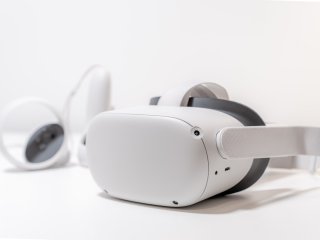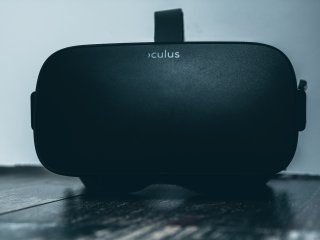When we used to sit around with friends and predict the future, many of us imagined flying cars and hover boards. Although we may dream of a day when all of us are floating around in mid-air, so far, it hasn’t quite happened yet. One thing that certainly has come true though, is virtual reality. Although the concept has been around for many years, it has only been in recent years where virtual reality has evolved to become a more mainstream, affordable form of entertainment.
true though, is virtual reality. Although the concept has been around for many years, it has only been in recent years where virtual reality has evolved to become a more mainstream, affordable form of entertainment.
With more news around Metaverses using technology to build virtual worlds for socialising, it opens up questions towards what the future may hold for virtual reality and how it will inevitably become a more popular method of how we socialise online.
Here, we take you through Virtual Reality, some considerations to take into account and jump into some online safety avenues that can help you support young VR gamers!
What is Virtual Reality?
Virtual reality places a user in a 3D virtual environment where they can experience various forms of immersion. Users usually have a headset that blocks out their surroundings to give the impression they are in a different environment. Many virtual reality systems also provide controllers and other accessories to bring movement from other parts of the body into the experience. Users can often explore environments by moving their head around or by interacting with items. It has been used in gaming and has also extended towards other audiences.
Virtual reality is nothing new and has been experimented with for many years. Nintendo even brought out the first virtual reality gaming console, the ‘Virtual Boy’, in 1995. It’s safe to say that it didn’t quite capture the imagination at the time but it nevertheless paved the way to see how the technology could improve. Now, virtual reality has become a somewhat staple in gaming. The Playstation has the PSVR, Meta has the Oculus, HTC has the Vive and there’s even ones available for mobile devices.
Although not quite as universally used yet, VR is still making a significant impact in the world.
Why Do People Use VR?
VR is considered an experience unlike any other. It takes immersion to a whole new level (excuse the pun) and if you haven’t tried it yet, it’s probably worth seeing what all the fuss is about. VR can quite literally pull you into another world and can be great for those who want to experience things they wouldn’t normally get a chance to. Games are interacted with in a whole new way that can bring a much more physical aspect into the mix. Not only that, but it can make you feel as though you’re a living, breathing part of the experience. Quite incredible when you think about it.
experience. Quite incredible when you think about it.
Now, VR has been used in other settings such as the education sector to bring more immersion into aspects of learning. There have even been arguments to suggest it can bring considerable benefit to the classroom in how it can engage students with learning materials. Needless to say, VR is growing and evolving at a fast pace!
Considerations for VR
The concept of VR is very exciting, especially for children and young people, but it still needs to be a place where online safety is consistently prioritised. While virtual reality can still seem like a very individual experience, the concept of interacting online with others has already begun through multiplayer games and platforms that aim to bring the VR community together. Platforms such as these, allow users to create avatars, create their own worlds and socialise with others. With this in mind, if children and young people are using VR experiences, it’s important to consider the following
Playing for long periods can result in headaches and nausea
Continue to utilise reporting features for online harm
VR games and experiences still have appropriate age ratings
Communication features with people online may be available
How Do I Report on VR
Different platforms have different routes to report content and other players, although a lot of headsets act as accessories as opposed to the systems themselves. If someone or something you have seen online is causing harm, make sure you know how to report it. Here are some of the most common used VR systems that have reporting functions.
As we’ve said through a lot of our gaming content, to understand the appeal of VR gaming is to fully experience it for yourself. VR can be a great activity for the whole family and as we evolve into using the technology more throughout our daily lives, it is important to know how to support young users whilst keeping online safety a constant priority. If you are interested in learning more about gaming, head over to the gaming section of the SWGfL website today and discover more information.




